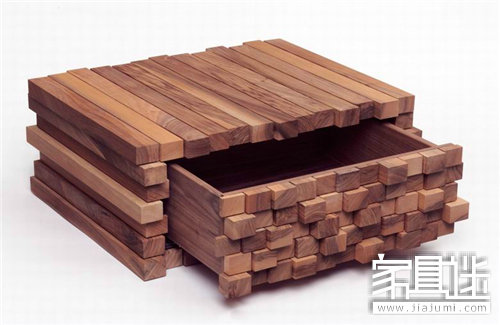Mansonia altissima Mansonia altissima, commonly known as African Black Walnut, is a member of the sycamore family. It is widely found in countries such as Ghana, Nigeria, Cameroon, and Ivory Coast, where its wood exhibits a rich range of colors, from taupe to deep chocolate. These hues make it a highly desirable material for furniture and decorative applications. Also referred to as Manson Indus, this wood is often used as an alternative to American Black Walnut. The tree can grow up to 40 meters tall, with a straight trunk and branches that typically start around 16 meters high. The sapwood is pale grayish-white, usually 2–4 cm wide, contrasting sharply with the heartwood, which has a slight purple tone and may display deep or subtle streaks. The species is native to West Africa and is known by various local names, including Apromo in Ghana, Bete in Ivory Coast, Ofun in Nigeria, Koul in Cameroon, and simply Mansonia in Britain. Some regional names include Oprono, Pruno, Nyankom, Boroua, Odo, Urodu, and Purono. Mansonia altissima is a popular substitute for American Black Walnut due to its straight grain and fine texture. It is widely used in the production of furniture, car dashboards, decorative veneers, and inlay work. Its dark, elegant appearance makes it suitable for a variety of interior design projects. However, individuals with sensitive skin or respiratory issues should use caution, as sawdust may cause irritation. Wood properties include a lustrous finish, no strong odor, a straight grain, fine and uniform structure, medium weight, and good drying characteristics. The air-dry density is approximately 0.65 g/cm³. This wood is easy to work with both manually and mechanically, and it glues and nails well. It also sands and paints smoothly. While it dries quickly, knots may sometimes result in minor cracking. The heartwood is highly resistant to decay and termites, while the sapwood absorbs preservatives more easily. It is commonly used in high-quality furniture, cabinetry, decorative veneers, joinery, flooring, and even piano keys. Related reading: What kinds of walnuts are there? What is the difference between American black walnut and European walnut? Octea porosa Known in trade as Imbuia, Octea porosa is also called Brazilian Walnut, Embuia Vermelha, or Lmbuya. Native to southern Brazil, this wood is valued for its striking color and unique grain patterns. Trees can reach heights of up to 40 meters with trunks about 1.8 meters in diameter. It is often referred to as "Brazilian walnut" due to its similarity in appearance to true walnuts. This wood is characterized by a warm yellow-brown to olive-brown to dark chocolate-brown coloration, with attractive strip patterns and a fine, uniform structure. It has a moderate hardness, a glossy surface, and a textured grain that may be slightly irregular. Due to its durability and aesthetic appeal, it is considered a premium material for furniture and interior design. Octea porosa is frequently used as a substitute for American Black Walnut. It is relatively easy to dry, though thick pieces may be prone to warping or cracking. It works well with both hand and machine tools, and it glues, paints, and polishes excellently. However, some reports indicate that sawdust may have an unpleasant smell and, in rare cases, cause skin irritation in sensitive individuals. It has good nail-holding power and resistance to termites and other pests. The heartwood has moderate preservative penetration, while the sapwood is easier to treat. This wood is ideal for high-end furniture, cabinets, flooring, decorative veneers, and joinery. As a versatile and visually appealing alternative to American Black Walnut, it remains a popular choice among craftsmen and designers alike. Pizza Oven,Outdoor Pizza Oven,Charcoal Pizza Oven,Industrial Bakery Equipment JIANGMEN XINXIN METAL PRODUCTS CO., LTD. , https://www.bbqoutdoorgrill.comCommonly Used Substitute Woods

